Journalists are eligible for free email subscriptions to SEJournal, including TipSheet, WatchDog (on access issues) and more.
The Society of Environmental Journalists is proud to present the winners of the 2014-2015 Awards for Reporting on the Environment. SEJ's journalism contest is the world's largest and most comprehensive awards for journalism on environmental topics.
SEJ honored the 2015 winners Wed., Oct. 7, at a gala ceremony at the Embassy Suites and Convention Center in Norman, Oklahoma, in conjunction with SEJ's 25th Annual Conference.
SEJ's 2015 Awards for Reporting on the Environment are...
Kevin Carmody Award for Outstanding In-depth Reporting, Large Market
Kevin Carmody Award for Outstanding In-depth Reporting, Small Market
Outstanding Beat Reporting, Large Market
Outstanding Beat Reporting, Small Market
Outstanding Feature Story
Outstanding Environmental Photojournalism
Rachel Carson Environment Book Award
SEJ’s 2015 Distinguished Judges
Kevin Carmody Award for Outstanding In-depth Reporting, Large Market
First Place
"Big Oil, Bad Air" by Lisa Song, David Hasemyer, Paul Horn, Zahra Hirji, Susan White, Sabrina Shankman, Marcus Stern, Hannah Robbins, David Martin Davies for InsideClimate News; Jim Morris, Ben Wieder, Alan Suderman, Jamie Smith Hopkins, Rosalind Adams, David Heath, Eleanor Bell, Alex Cohen, Chris Zubak-Skees for The Center for Public Integrity; Gregory Gilderman, Kevin Hayes, Neil Katz, Faisal Azam, Eric Jankstrom, Shawn Efran, Katie Wiggin for The Weather Channel
Story links:
- "Fracking the Eagle Ford Shale of South Texas"
- "Health Worries Pervade North Texas Fracking Zone"
- "In Fracking’s Wake: Open Pits Offer Cheap Disposal for Oil and Gas Sludge, but Health Worries Mount"
- "Fired: Texas Oil and Gas Regulators Say They Tried to Enforce Rules, Lost Jobs"
- "Texas Weakens Chemical Exposure Guidelines, Opens Doors for Polluters"
Judges' comments: This is a wonderfully in-depth saga that starts with the impact and doesn't let go. Many of us have written about, or at least read about, fears of water contamination from fracking. This package is about an under-reported element of the practice: air pollution. In what judges called an “exhaustive and relentless” examination, the Center for Public Integrity and InsideClimate News, with a video assist from the Weather Channel, make a case that chemicals associated with fracking are wafting through the air and presenting risks to neighbors. We learn that “air emissions from oil and gas waste are among the least regulated, least monitored and least understood components in the extraction and production cycle.” The authors created this compelling package with dogged data work, comprehensive interviews, and an obvious drive to shed light on the problems that residents had described, and that politicians, regulators and companies had largely ignored. Their determination showed as a six-month project stretched to 20. The already well-decorated reporting team produced 42 stories and three video mini-documentaries, filed more than 50 open-records requests and reviewed thousands of pages of documents. They traveled 12 times, to Texas, Louisiana and Pennsylvania. We discover in this multimedia examination that regulators have been pressured not to regulate. That pressure was applied at times by politicians who accepted millions from industry players. And we learn that regulators who dared to do their jobs in the face of that pressure were fired. As the work was published and aired, there were criminal investigations, government inquiries and the installation of at least one new air monitor. The reporting here is solid, and the multimedia work is both captivating and thorough. The organizations proved their commitment to the inquiry by keeping at it, story after story. This commendable work upholds the best traditions of investigative reporting.
Second Place
"Mining Misery" by Rakteem Katakey, Rajesh Kumar Singh and Tom Lasseter, for Bloomberg News and www.bloomberg.com
Story links:
- "Dying Kids, a Poor Indian Village, Uranium and a Mystery"
- "India’s Uranium Boss Says Deformed Children May Be ‘Imported’"
- "India Court Orders Uranium Corp. to Probe Deformities Near Mines"
- "Death in India Lurks in Poisoned Water on the Rim of Coal Fields"
- "India Loses Student Engineers on Sand Mafia Path to Deadly River"
Judges' comments: This was a well-written and finely packaged series that included water testing as part of the investigation. In the end, the work appears to have forced some action. The authors dug into documents, talked with a wide variety of sources and insisted on balanced reporting. The writing makes this package vivid, compelling and heart-wrenching. It's true the issue has been in the Indian press and in the courts, but Bloomberg took it a step farther, finding cases that regulators seemed unable to find.
Third Place
"Deadly DuPont Leak" by Lise Olsen, Mark Collette and Karen Chen, for the Houston Chronicle
Story links:
- "Deadly DuPont Leak Exposes Safety, Response Failures"
- "Newly Released Reports Illustrate Confusion on Deadly Morning at DuPont Plant"
- "DuPont Leak Reminds Man of His Own Accident There"
- "Dupont Workers Had Been Exposed to Potentially Lethal Chemical for Years, Records Show"
- "La Porte Plant Typified DuPont's Ills"
Supplemental Materials:
Judges' comments: This was a compelling look at a disaster, with stellar use of public documents and strategic interviewing. The finished product featured excellent storytelling backed by documents and solid interviews. This package not only takes a close look at what happened on that fateful night, but also explores persistent problems in DuPont's safety system. This work was aggressive and held a major corporation and regulators accountable for failures. And this was a big-city paper in a big city where DuPont is a big player, which is all the more commendable.
Honorable Mention
"Broken Water System" by Garance Burke and Jason Dearen for The Associated Press, bigstory.ap.org
Story links:
Judges' comments: The judges recognized this great database work and impressive storytelling in a strong multimedia look at a public issue of great importance to Californians. This was an impressive example of strong storytelling. Given the drought, and the renewed importance of the integrity of the water-rights system as restrictions come into place, this work was timely and exemplary.
Honorable Mention
"Politics of Poison" by David Heath and Rebecca Williams, for The Center for Public Integrity, Reveal from the Center for Investigative Reporting and PRX, and Michigan Radio
Story links:
- "How Politics Derailed EPA Science on Arsenic, Endangering Public Health"
- "The Politics of Poison"
- "This Mom Didn’t Know Why Her Family Was Sick Until She Checked Their Water"
- "Obama's EPA Breaks Pledge To Divorce Politics from Science on Toxic Chemicals"
- "When Politics Mix with Science"
Judges' comments: This wonderful package followed the data, the money and the politics while telling a story of national importance. This was a very thorough job of uncovering how lobbyists and members of Congress take actions that threaten public health.
Kevin Carmody Award for Outstanding In-depth Reporting, Small Market
First Place
"Oil Trains in Oregon" by Rob Davis, for The Oregonian/OregonLive
- "Volatile Issue, Volatile Cargo"
- "ODOT To Keep Public in Dark"
- "ODOT Will Get Oil Train Info"
- "Oregon Has No Plans For River Spills By Oil Trains"
- "Railroads Skirt the Truth"
Judges' comments: When reporter Rob Davis and the Oregonian began detailing the widespread safety flaws in the ways railroad companies transport oil through the Pacific Northwest, the stories caught regulators, residents and public officials by surprise. No one had known that hundreds of millions of gallons of highly explosive oil were moving through towns and ports around the state in tank cars considered unsafe. Using Oregon's public records law and the Freedom of Information Act, Davis was able to review crucial documents including hundreds of federal railroad safety inspections and hazmat reports. The paper had chemical samples of oil submitted to regulators reviewed. It got an order from the State Department of Justice that required the Oregon Department of Transportation to release information about where crude oil was moving. In addition, as a result of Davis's reporting, Oregon's governor ordered a review of state oil train safety readiness. He also approved a plan to hire more rail safety inspectors and oil planners. Even the operator of Oregon's major oil train terminal voluntarily agreed to take steps to improve tank car safety. This is investigative journalism at its finest. The reporter was thorough, dogged and he broke new ground, even overcoming obstacles from uncooperative state regulators. He also achieved results of the highest order: a more informed, safer public and a more transparent state government. The judges said these stories stood out in a highly competitive field not only because of their impact but because of their presentation in a reader-friendly format that is not overly reliant on technical data or descriptions which could have been tempting in an undertaking like this one.
Second Place
"Up In Flames" by John Tedesco, Jennifer Hiller, Joseph Kokenge, Kim Man Hui and Mike Fisher, for San Antonio Express-News
Story links:
- "Flares in Eagle Ford Shale Wasting Natural Gas"
- "Flares Emitting More Pollution Than Refineries"
- "Top Flaring Sites Lacked State Oversight"
- "While the Gas Burns, Companies Explore Solutions"
- "Even More Natural Gas Being Flared in Eagle Ford Shale"
Judges' comments: The San Antonio Express-News did an incredible job in their series about dangerous air pollution from flares in the Eagle Ford Shale and regulators' failure to adequately address it. Not only was the data analysis of millions of state records regarding flaring of excess gas impressive and meticulous, the reporters were also thoughtful and elegant in their presentation of the resulting data. By pointing out the amount of gas wasted through flaring and its potential worth, they told the story of the numbers from a business perspective that can attract a larger audience; and by comparing it to refinery pollution, a number-crunching task that is worthy in itself, they made the environmental and public health case that this pollution has an impact. We also loved the way this investigative team held the Texas Railroad Commission accountable by using its own records to locate companies that didn't have the proper permits needed to flare — and then asking them why they lacked this basic information. And, in the fourth and final part of the series, they covered the important "solutions" angle of steps being taking to address excess flaring. After the series was over, the Express-News did not back down on its coverage of the issue and is continuing to lead in this area.
Third Place
"How Cancer Came to the Acreage" by Sharon Lerner, for The Nation
Judges' comments: Sharon Lerner dug deep into court and government records to uncover her story about a brain cancer cluster in a South Florida community. Although some sources were under a gag order due to pending litigation, she pieced together a thorough history of the cluster, the materials likely handled by a nearby Pratt and Whitney facility, and the chilling effect financial concerns had on criticism of the defense contractor. Her story was also notable for clearly explaining how regulators determine whether a group of cancers is a true anomaly, as well as the difficulties involved in tying that anomaly to a particular industry. This story unfolds like a murder mystery and sparked a discussion not just in the Acreage, but in other communities dealing with drinking water contamination.
Outstanding Beat Reporting, Large Market
First Place
"History, Technology, Politics and Impact of Solar Power" by Peter Fairley, for MIT Technology Review magazine, IEEE Spectrum magazine
- "Can Japan Recapture Its Solar Power?"
- "Topaz Turns On 9 Million Solar Panels"
- "Hawaii’s Solar Push Strains the Grid"
- "How Rooftop Solar Can Stabilize the Grid"
Judges' comments: In his Large Market Beat Coverage of solar power, journalist Peter Fairley goes wherever he needs to go to best illustrate his stories. He takes us to the Atsumi Peninsula in Japan, where post-Fukushima renewable energy is needed to make up for the loss of the country's nuclear reactors. He acquaints readers with the island of Kauai, Hawaii, where they're tackling solar power's biggest challenge—its intermittent nature. And we're shown around California's Carrizo Plain, where the world's largest photovoltaic power plant has the potential to generate more energy than the grid demands. This is satisfying journalism. With anecdotes, scenes and knowledgeable sources, Fairley keeps us interested as we're reading, and he leaves us feeling fulfilled when we're finished. The stories are in-depth but readable, technical but understandable. It’s refreshingly clear and compelling journalism around a topic that easily could be either too esoteric or too superficial.
Second Place
"New Voices, New Angles — Attempts to Broaden Coverage on the Climate Crisis" by Jason Margolis, for PRI's The World
Story links:
- "Why Climate Activists Are Laughing About Global Warming in Indiana"
- "A Classical Music Album About Climate Challenges Is a Surprise atop the Charts"
- "Should Mexicans in Acapulco Stay and Fight Climate Change or Give In and Leave?"
- "Mexico Experiments with Adapting to Climate Change Naturally — And on the Cheap"
- "The Best Way To Get Around Traffic-Clogged Mexico City May Be on a Bike"
Judges' comments: Neuroscience tells us that most of the time, people project what they know onto the world around them. Climate change can be like that — a chronic story with difficult outcomes that most of us feel we’ve heard more than enough times. That’s why Jason Margolis’ fresh reporting on his beat, climate change, was unanimously one of our top picks — his stories about climate change were framed in new and unexpected ways — a music composer, biking in Mexico City, on-the-ground adaptation — and tied to unconventional perspectives. That was his intention, he wrote in his entry, and he succeeded. This is precisely how media can change the conversation — by reframing the issues for listeners so that they will be engaged and take in more information than they project. That’s what Mr. Margolis has done — stories that all three judges agreed were well-reported, sound-rich — excellent storytelling with lots of ambient sound.
Third Place
"Long Island Environmental Coverage" by Jennifer Barrios, for Newsday
Story links:
- "Ancient Aquifer, Modern Problems"
- "Predators To Prowl L.I. [Long Island]"
- "New Threat to Sound"
- "A Well of Anxiety"
- "Wetlands Peril"
Judges' comments: Newspaper beat reporters need to be on top of the daily news as well as having the depth of knowledge to know where others are not looking. Jennifer Barrios embodies those skills. The stories in her entry probed immediate challenges such as pollution from an illegal waste dump and the controversy surrounding New York City's plan to pump water from a Long Island aquifer. The stories also asked questions about environmental issues that are not a concern today but could be future problems for Long Island, such as ocean acidification. Her writing explains complex science and policy. Readers of Newsday should be glad to have Barrios's eyes on their community.
Outstanding Beat Reporting, Small Market
First Place
"Reporting on Oregon's Environment" by Rob Davis, for The Oregonian/OregonLive
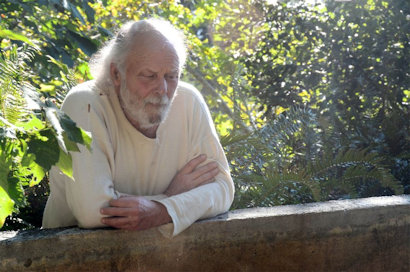 |
| Mike Philipsheck complained in 2007 that he and his wife got sick after a helicopter sprayed weed killers near their Curry County home. The Oregon Department of Forestry botched its investigation. © Rob Davis/The Oregonian |
Story links:
- "Oregon’s Only Saltwater Lake Is Disappearing, and Scientists Don't Know Why"
- " Oregon Agencies Blew Off Complaints, Red Flags Before Helicopter Sprayed Weed Killers on Residents"
- "Oregon License Plate Money, Meant for Endangered Salmon, Instead Funds Salem Bureaucrat's Salary"
- "Oregon Schoolchildren Inhale Cancer-Causing Fumes on Buses As State Plods Towards Fix"
- "Forest Service Says Media Needs Photography Permit in Wilderness Areas, Alarming First Amendment Advocates"
Judges' comments: Rob Davis’ reporting on Oregon's Environment embodies the spirit of beat reporting. Whether writing about a mysteriously disappearing lake, the mismanagement of chemical spraying or the diesel bus fumes being inhaled by school children, his reporting shines a light on local injustices, holds decision makers accountable and humanizes what could so easily be dismissed as technical problems. The stories he brings to light give readers the chance to become more thoughtful, engaged citizens.
Second Place
"Beat Reporting in Maryland" by Tim Wheeler, for The Baltimore Sun and baltimoresun.com
Story links:
- "Orchid Loss in Md. Hills Blamed on Deer"
- "Exploring the Atlantic’s Deep Coral-Lined Canyons"
- "‘Squirrel Man’ Helps Bring a Restoration Victory to Shore"
- "Stream Restoration Stirs Debate Over Effectiveness"
- "The Windfall and the Pitfall"
Judges' comments: Tim Wheeler serves up good reads that are information-laced and balanced. His pieces on the recovery of the Delmarva fox squirrel – “some as big as a housecat,” on the dwindling of wild orchids as deer multiply and on coral-lined, ocean canyons are spiced with colorful quotes while being meaty with facts. An article questioning the effectiveness of stream restoration and one on the possible harm or benefit of fracking near the state’s largest freshwater lake were inclusive and authoritative.
Third Place
"Texas Beat Reporting" by Asher Price, for Austin American-Statesman
Story links:
- "Texas Air Toxicologist Does Battle with EPA Science on Air Emissions"
- "As Game Wardens Patrol Texas Border, Traditional Enforcement Declines"
- "Investigators Crack Down on Environmental Fraud"
- "State Penalizes San Antonio Coalition After Fracking Study Made Public"
- "Wealthy Residents Cash In on $165 Million in Austin Utility Rebates"
Judges' comments: Asher Price’s writing transforms important but often wonky issues into interesting reads, whether he’s reporting on environmental fraud or the use of Texas game wardens to patrol the border. His profile of a Texas air toxicologist who discounts the dangers of smog was deftly handled, respecting the toxicologist’s views while demonstrating how policymakers selectively use science to bolster their causes.
Honorable Mention
"Wildfire and Drought in California" by Amy Quinton, for Capital Public Radio
Story links:
- "California Burning"
- "Damage from King Fire Could Get Worse"
- "Californians Describe Drought’s Impact at Water Board Hearing"
- "Ranchers Bouncing Back, But Still Feel Effects Of Drought"
- "Bees Feeling Effects of California Drought"
Judges' comments: Amy Quinton’s dedication to keeping readers informed about California’s wildfires and drought shines through her stories. Particularly impressive is the multi-part web piece, “California Burning,” which Quinton shaped with months of reporting and insight gathered from her audience.
Honorable Mention
"Energy Reporting" by Reid Frazier, for The Allegheny Front, WESA, WPSU, WQLN
Story links:
- "Fracking and Groundwater Contamination? It's Complicated"
- "Turning Frack Water into Profit Proves a Challenge"
- "Where Fracking Waste Spills, Concern for Groundwater"
- "Flooding the Zone: Gas Industry Pours Millions into Lobbying Pa."
- "Did Congress Kill Wind Energy Jobs in PA?"
Judges' comments: Reid’s straight forward, multi-faceted radio reports on fracking and the loss of tax credits for wind energy showed an adroit use of public records and the ability to tackle both politics and science with skill.
Outstanding Feature Story
 First Place
First Place
"Galapagos" by Tim Howard, for Radiolab, podcast and over 500 NPR member stations
Judges' comments: Outstanding report on the Galapagos Islands. Judges were captured by the engaging inquisitive style that both drew them into the story and held their interest throughout. The hour-long program was a great explainer on the impact people have had and are having on a once pristine environment. The creative storytelling transported listeners to an exotic location by reaching out to passionate people with stories to tell. The naturalist trying to get attention for his political hopes in the midst of a busy street. The researcher drawn to the islands to study rare tortoises. The conservationist who explains how goats shapes the island's present day. The researcher working to save the ancient animals. All of the characters and sounds wrapped up in curiosity carried us to the Galapagos. The audio morsels were chopped up into small bite-sized portions that were easy to chew and digest. In the end, a satisfying scientific meal that satiated an appetite we didn't know we had.
Second Place
"Meltdown: Terror at the Top of the World" by Sabrina Shankman, for InsideClimate News
Judges' comments: Judges found this a thrilling and compelling story about a polar bear attack on an Sierra Club outdoor trekking group imperiled by humans’ inadequate understanding of global warming impacts. One judge called it a “metaphor for our times.” Author hooked readers early on by using the adventure of this Canadian wilderness trip as a vehicle to explore how melting polar ice caps are disrupting the Arctic environment and the lives of polar bears. This structure allowed the author to weave back and forth between an adventure story and an environmental science story. And we got to know the people involved: including the trip organizers who had carefully researched bear safety measures, but didn’t succeed in getting the latest information about changing bear behavior. This story was a long ride, but worth the trip. In the narrative, readers feel like they are with this group, walking into a wilderness without understanding how much they are in danger at a risky camp site with inadequate protections. And in the explanatory part of this story, we got the chilling immensity of climate problems facing us.
Third Place
"Losing Ground" by Bob Marshall, Brian Jacobs and Al Shaw, for ProPublica & The Lens
Judges' comments: This is a powerful presentation of the plight of Louisiana’s coastline that sets a new high bar for interactive graphics integrated with well-written general narrative and compelling sidebar detail. The judging panel was amazed at how well all of the elements were incorporated, and yet accessible in manageable portions so the massive amount of data did not overwhelm the viewer/reader/listener. Click on the Texaco Canal, for example, and one not only sees how oil services have eroded the wetlands but one also hears the voice of a resident who says the wildlife he used to see there as a boy he now only sees at the movies. Zero in on Delacroix, another of the vanishing places, and one gets to hear the voices of the inhabitants recalling the Spanish-speaking culture that goes back for two centuries. Bravo to the team led by Lens and ProPublica! They showed how one can do serious and in-depth reporting about a tragedy still in the making while engaging the consumer with the compelling side of the story.
Honorable Mention
"Broken Landscape: Confronting India’s Water-Energy Choke Point" by Sean Peoples, Michael Miller, Jennifer Turner and Keith Schneider, for New Security Beat & Circle of Blue websites
Judges' comments: Judges found this film entry engaging with a fresh, very human story. The photography and music were top quality and added immensely to this story. One judge wrote, "I liked the way the author allowed the people to tell their stories."
Honorable Mention
"How We Can Tame Overlooked Wild Plants to Feed the World" by Hillary Rosner, for Wired magazine
Judges' comments: Looking for new plant foods: surprisingly easy for a subject that might be hard pressed to be considered sexy. Judges credited the skillful writing. One judge said, "I didn't realize I was interested until I finished the entire article. Left me feeling full and satisfied that I had consumed a nutritious intellectual meal."
Outstanding Environmental Photojournalism
First Place
"Coal's Visible Impacts" by Robb Kendrick, for National Geographic Magazine
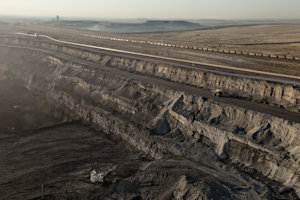 |
| Click to enlarge. © Robb Kendrick. |
Photo 1 (right): Wright, Wyoming: The Black Thunder mine, one of the world’s largest, covers 75 square miles of public and private land. Trucks the size of houses haul more than 90 million tons of coal a year to trains, which carry most of it to eastern power plants.
Photo 2: Shuozhou, China: Amid the withered stalks of last year’s corn, a farmer prepares for spring near a power plant in Shanxi Province. The facility, which supplies electricity to Beijing, 200 miles away, covers local fields, crops and people with soot.
Photo 3: Datong, China: At a coal terminal in Shanxi Province, workers pick rocks from low-priced coal as it moves past on a conveyor belt. Often working without masks that would protect them from coal dust, they earn three dollars for an 11-hour shift.
Photo 4: Jharkhand, India: A young boy carries a chunk of coal into the mining camp where he lives. His family will burn the coal to make coke — a cleaner and hotter-burning fuel — which they’ll either sell or use themselves for heating and cooking.
Photo 5: Meghalaya, India: A coal miner climbs a shaky ladder to daylight. A 19th-century mine in the U.S. or Europe might have looked just as hellish; mines there are safer now. But coal’s environmental costs have grown — and become global.
Judges' comments: Robb Kendrick's entry, "Coal's Visible Impacts," was a unanimous selection by this year's judges for first place in the 2014 SEJ photojournalism contest. The soot that covers the coal industry subjects featured in Kendrick's photographs practically spills off the page, evoking a strong visceral reaction. Traveling to three continents to cover this story for National Geographic, Kendrick had great opportunities, ones that he made the most of. Unforgettable images include a man climbing out of a deep, black mine on a shaky ladder, and one of cross-legged workers framed in an off-kilter, rectangular box picking through coal on a conveyor belt. Pure visual poetry. One judge commented, "What an expansive, personal, gorgeously-seen collection of images that speak to coal and the power of the coal industry to imprison societies and destroy ecology."
Second Place
"California Goes Nuts" by Matt Black, for Mother Jones and MotherJones.com
 |
| Click to enlarge. © Matt Black. |
Photo 1 (right): At a processing plant, nuts are loaded into crates.
Photo 2: It takes a gallon of water to produce one almond. And that's not the most insane fact about the hedge-fund-fueled race to plant thirsty trees in the middle of a catastrophic drought.
Photo 3: Near the town of Ducor, California, a newly planted pistachio orchard.
Photo 4: A worker sorts almonds at the processing plant near Los Banos.
Photo 5: In some Central Valley towns, residents now rely on bottled water when their wells run dry due to demand from nearby nut orchards.
Judges' comments: Matt Black's entry, "California Goes Nuts," is gritty and spare. Just like the situation California farmers find themselves in as the golden state faces its worst drought in recorded history. The photography choices here were very cinematic — close, medium, and wide shots — helping underscore the impact of the arid West's growing problem. Judges described Black's work as austere, spare, and restrained. He covers an important story with a tightly-edited collection of images, all extremely well-captioned. The choice of a black and white presentation added to the textural feeling of drought.
Third Place
"Feeding 9 Billion — The Farmers Who Will Grow Our Food" by Jim Richardson, for National Geographic Magazine
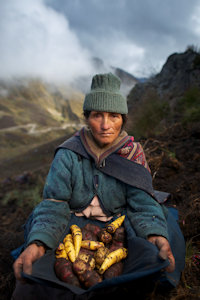 |
| Click to enlarge. © Jim Richardson. |
Photo 1 (right): Feeding the 9 billion people who are expected to be living on Earth by 2050 will be one of mankind's greatest challenges, and will tax the carrying capacity of the planet. Already agriculture makes the greatest environmental impact of any human activity. This series looks at the farmers who grow our food and the conditions they face. Estela Condor (seen here) grows potatoes at 14,000 feet in the Andes of Peru.
Photo 2: Traditional commodity-based agriculture, as typically practiced in the United States, gets the most attention when feeding our growing population comes under scrutiny. Scott Dowling of South Dakota is more than typical: he grows 50,000 acres of wheat using state of the art agricultural methods. But his yields are susceptible to loss — as happened in 2013 when he lost 26,500 acres to drought. It is often assumed that expanding industrial scale agriculture is the solution to feeding the planet.
Photo 3: Villagers in Jaghati, Bangladesh harvest rice in their muddy fields using a foot-powered thresher. Such methods are often assumed to be inefficient, but these villagers farm very intensively; they can actually grow more food per acre than Scott Dowling (previous picture) does with mechanized agriculture. Over 50 percent of the world's food is still grown on farms of less than five acres.
Photo 4: Villagers in Molmolia, Bangladesh augment their farm production by growing prawns in small ponds — but as a cash crop. Too valuable for the villagers to eat, the prawns are sold at market, eventually making their way to European restaurants. Improving food supply and nutrition in the third world is a very complicated problem.
Photo 5: Mariam Keita harvests peanuts on a farm in Siby, Mali. Farming here is a communal activity involving the whole related familial group who holds farming rights to the land (though they may not actually "own" the land, a problem when foreign investors make land grabs of agricultural land). She is also passing along her knowledge and traditions to her child. Farms like hers of less than five acres still make up the vast majority of farms in the world.
Judges' comments: Jim Richardson's entry, "Feeding 9 Billion — The Farmers Who Will Grow our Food," is an exquisite collection of portraits, expertly done. The one of a prawn harvester is particularly memorable in its creative composition. A high Andes woman with vegetables is epic. This entry could easily have placed higher in the judging had it not competed against entries with more compelling story lines. Judges appreciated the well-conceived, well-researched, and technically perfect photographs. Topically important, very, very strong.
Honorable Mention
"Energy in the American West" by Jamey Stillings, for TIME Magazine's "See the World’s Largest Solar Plants From Above"
 |
| Click to enlarge. © Jamey Stillings. |
Photo 1 (right): Desert Sunlight Solar Farm produces 550 megawatts of energy, equal to the output of a conventional power plant, near Palm Springs, Calif., where 8 million photovoltaic (PV) panels convert sunlight into electricity.
Photo 2: Desert Sunlight Solar Farm where 8 million solar panels power 160,000 California homes, in the Mojave Desert, California.
Photo 3: The Crescent Dunes Solar Energy Project, a 110-megawatt solar thermal power project, near Tonopah, Nevada.
Photo 4: The Crescent Dunes Solar Energy Project, near Tonopah, Nevada.
Photo 5: The Crescent Dunes Solar Energy Project, near Tonopah, Nevada.
Judges' comments: Jamey Stillings' entry, "Energy in the American West," was awarded Honorable Mention for a collection of other-worldly solar installations captured in intricate aerials revealing stunning, abstract patterns of man's attempt to harness alternative energy. The entry is timely and topical, yet only from one point of view. One would have liked to see what Stillings' creative eye would have revealed from work taken on the ground. Lovely work.
Honorable Mention
"Oil Spill in the Sundarbans" by Arati Kumar-Rao, for LiveMint.com, Maptia, qz.com
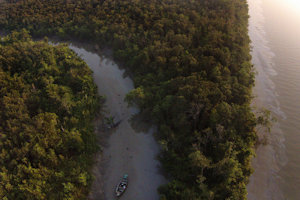 |
| Click to enlarge. © Arati Kumar-Rao. |
Photo 1 (right): On December 9, 2014, a cargo ship rammed an oil tanker in the Bangladeshi Sundarbans. 230,000 liters of fuel oil spilled into the largest remaining unbroken stand of mangroves in the world — home to thousands of forest people, and endangered creatures like the Bengal tiger, river dolphins and the masked finfoot.
Photo 2: Our boat reached the Sundarbans on December 14, four days after the spill. The mangroves sported a three-meter-high bank of black fuel oil for over thirty kilometers. Men, women and children were knee deep in the mudflats and up to their elbows in heavy fuel oil.
Photo 3: Here is where the hazard lies: fishermen from the village Joymoni, most affected by the spill, are collecting the oil.
Photo 4: In the village the plant matter is boiled and heated to loosen the oil. This is collected in barrels, and trucked back to Padma Oil. The fishermen are doing all the collection and boiling sans any protective gear.
Photo 5: Children, some as young as nine, were smeared in heavy fuel oil by day on the river, and engulfed in its fumes when they got home. These oils contain chemicals that are toxic. Eleven days after the spill, the children and elderly of Joymoni began to fall sick with digestive, respiratory and dermatological illnesses.
Judges' comments: Arati Kumar-Rao's entry, "Oil Spill in the Sundarbans," was also awarded an Honorable Mention for a very well done, one-day shoot of an oil spill in Bangladesh. Rich details, with a good scene setter, Kumar-Rao's camera takes us on an immersive, first-hand visit to a community reeling from a devastating oil spill. It's hard to imagine how the photographer could have gotten any closer.
Rachel Carson Environment Book Award
First Place
"Untamed: The Wildest Woman in America and the Fight for Cumberland Island" by Will Harlan
Judges' comments: Rarely does a writer get so deeply into the heart of his or her subject while also avoiding the pitfalls of sentimentality. This is one gorgeous book, a testament not only to Will Harlan's obvious writing chops but also what the best in journalism is all about, the passion to dig and go beyond the obvious. Harlan's unflinching, inspirational biography of Carol Ruckdeschel, a brilliant-yet-eccentric woman who completely immersed herself in nature and maintained an uncompromising defense of it for decades, breathes life into a "dirt poor naturalist" many people in society brand as a misfit. He shows the reader her amazing character, spine and spunk — especially noteworthy during an era of conformity — while also raising questions about her sanity and social skills. "Untamed" is a unique portrayal of a unique crusader. As the author himself notes, Carol Ruckdeschel "courageously allowed me to rip off old scab wounds, splay open her innards and dissect her life." Very thought-provoking stuff, with beautiful writing and an eye-for-detail that would have made Rachel Carson proud. For background on the writing of this book, see Between the Lines' "Author Spends Two Decades 'Hooked on a Character'," SEJournal, Winter 2015/2016.
Honorable Mention
"Windfall: The Booming Business of Global Warming" by McKenzie Funk
 Published by The Penguin Press
Published by The Penguin Press
Judges' comments: Of the countless books that have been published about climate change, few are as compelling or offer the kind of unique take on the subject found in McKenzie Funk's amazing book, "Windfall." For six years, Funk traversed the globe gathering information about challenges, absurdities and profiteers. His hard work shows, as does his balanced vision and powerful writing. Far more than another inventory of what ails the planet, Funk uses great storytelling techniques to enlighten readers to what a lot of them don't see; that is, how the business of global warming itself has become a moment in time for capitalists. Bankers, utility executives and engineers are part of a long list of characters who get skewered in Funk's delightful tale, which — while following the money trail and showcasing hard-nosed reporting — is really as much of a story about human behavior as anything. There's snark, there's dark humor, there's irony and satire — but only to advance the story — and Funk's incredible skills as writer and researcher are about as sophisticated as they get. "Windfall" is a stunning page-turner, a book that re-frames climate change as an entrepreneurial challenge. Funk stays clear of policy rants. He brings fresh energy and illumination to a familiar, vital topic.
Honorable Mention
"The Reef: A Passionate History" by Iain McCalman
 Published by Scientific American/Farrar, Straus & Giroux
Published by Scientific American/Farrar, Straus & Giroux
Judges' comments: The Great Barrier Reef, which is visible from outer space, stretches 1,400 miles along the Australian coast and is one of the world's greatest ecosystems, a collection of 3,000 individual reefs, more than 900 islands and thousands of marine species. Historian-explorer Iain McCalman, a fellow of the Royal Historical Society, a University of Sydney history professor and author of three other books, offers a fascinating historical account from Captain Cook to climate change. Most importantly, through his extensive historical perspective, McCalman shows why the Great Barrier Reef matters. He covers anything from controversies of ecology as an interdisciplinary science to dying corals as the canaries of climate change. "From a science point of view, things look bleak," he states, raising questions about the future of Earth's great reefs in general after 240 million years of survival. McCalman's historical recounting of early explorers sets the stage for a compelling narrative, showing how reefs have been subject to human impacts for years but nothing like they are now.
Esteemed Judges, 2015 SEJ Awards for Reporting on the Environment
- Erin Ailworth
- Erik Anderson
- Perry Beeman
- Sean Corcoran
- Denis Cuff
- Steve Curwood
- Jackleen de La Harpe
- Dan Fagin
- Thomas Henry
- Coco Liu
- Bill Luster
- Mary Mazzocco
- Karl Mondon
- Anne Paine
- Kendra Pierre-Louis
- Dina Rudick
- Neena Satija
- Susan Sharon
- Douglas Struck
- JoAnn Valenti
- Brett Walton
2015 Awards Committee
Co-Chairs:
Beth Daley, New England Center for Investigative Reporting and formerly of The Boston Globe
James Bruggers, The (Louisville) Courier-Journal
Committee Member:
Emilia Askari, Independent Journalist
Director of SEJ Awards
Chris Bruggers, Rigel Consulting







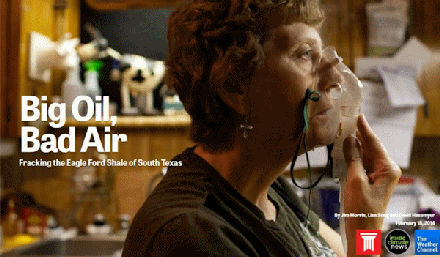
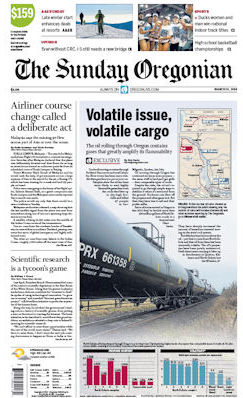








 Advertisement
Advertisement 



